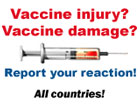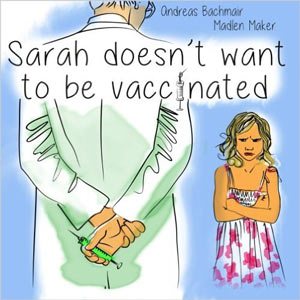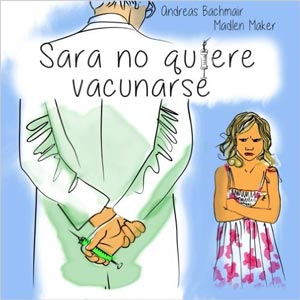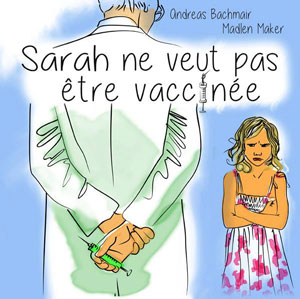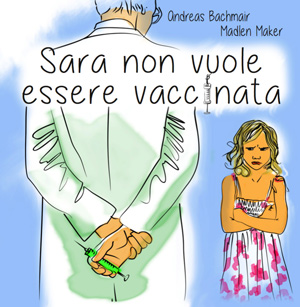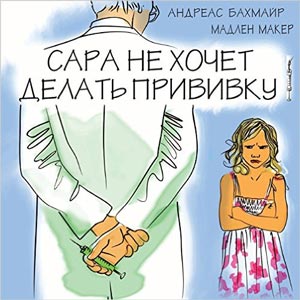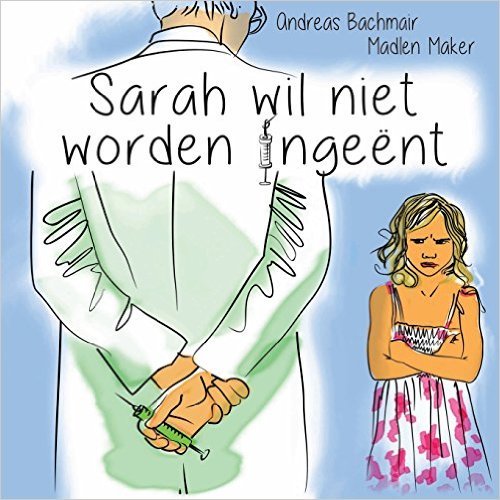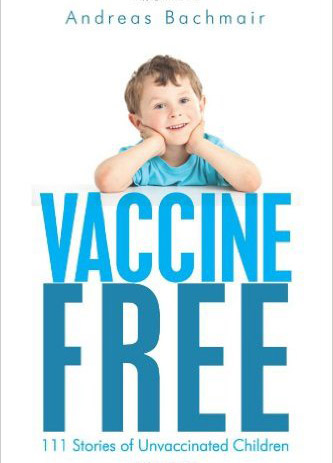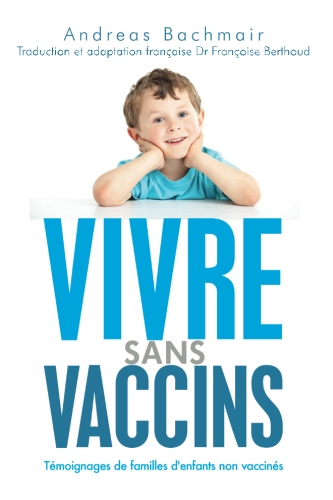Measles vaccination
Vaccine
Measles viruses for vaccines are bred in the cultures of embryonic chicken eggs. The viruses are weakened for the vaccination and antibiotics are added. The remainders of egg white entail an allergic risk for the vaccination.
The vaccine is generally administered as an MMR vaccination, i.e. also against mumps and Rubella. The vaccination consists of weakened living viruses which are administered simultaneously. This is problematic because one of the vaccination viruses can cause immune suppression which can lead to the gradual onset of an infection with different pathogens (Halsey,-N-A: Increased mortality after high Titer measles vaccines: too much of a good thing.Pediatr-Infect-Dis-J. 1993 Jun; 12(6): 462-5)
The MMR vaccine regularly contains two viruses from chicken cell culutres which can cause leukemia in birds. Its relevance for people has not been investigated yet (Tsang et al, J Virol, July 1999, 73(7): 5843-5851)
Immunity
The vaccine establishes a short-term protective effect of 90-95% (BAG). Mitchell and Tingle were able to prove in a study that 1 year after the vaccination, 16% of the people who had received the vaccination were no longer protected (Mitchell LA, Tingle AJ, Decarie D, Lajeunesse C.: Serologic responses to measles, mumps, and rubella (MMR) vaccine in healthy infants: failure to respond to measles and mumps components may influence decisions on timing of the second dose of MMR.Can J Public Health. 1998 Sep-Oct;89(5):325-8.)
This is the reason why it has been propagated to shift the second MMR vaccination to younger years, which is now also officially recommended by STIKO. Whether this dilemma has been solved is questionable because there are a number of investigations which show that the antibodies increase after the booster vaccination but that they drop again, too, so that there is no longer any protection.(Bartoloni A, Cutts FT, Guglielmetti P, Brown D, Bianchi Bandinelli ML, Hurtado H, Roselli M.:Response to measles revaccination among Bolivian school-aged children
Trans R Soc Trop Med Hyg. 1997 Nov-Dec;91(6):716-8.)
In USA and Gambia, two countries where the vaccination rate against measles is the highest, measles epidemics which are very severe in nature continue to occur. Moreover, more adults are contracting the measles nowadays which increases the complication rate (the total number, however, has decreased).
Because there is less vaccination protection and contact with wild viruses has decreased, mothers who have been vaccinated against measles can only offer their children a low degree of maternal passive immunity. Measles in newborns used to be the exception but nowadays many more babies contract the disease (even though the absolute number has gone down). According to Gold, of the 300 cases of measles that were reported in 1995, 50% were babies and adults. (Gold, E. : Current progress in measles eradication in the United states; Infect Med 1997, 14(4) 297-300)
RSV Infections
For a number of years an increase of severe respiratory infections caused by the RS viruses (RSV=respiratory syncitial virus), primarily in children who are younger than 2 years of age. The assumption is that there is a connection between the introduction of measles vaccinations (in Germany since 1973) which the majority of women, who today are mothers, underwent, and their children’s more frequent susceptibility for the RS virus. The assumption is supported by the fact that both the measles virus and the RS virus belong to the same family of paramyxo viruses. The study also states that it also seems to be the case that in countries with low measles vaccination rates the susceptibility for severe respiratory infections in children which necessitate being admitted to hospital is lower. A similar development was also observed in the US, Great Britain and Sweden. (Weigl A, Puppe W, Belke O, Neususs J, Bagci F, Schmitt HJ., The descriptive epidemiology of severe lower respiratory tract infections in children in Kiel, Germany, Klin Padiatr. 2005 Sep-Oct;217(5):259-67.)
A lack of wild boostering
Measles vaccinations lead to a marked drop in circulating wild viruses which kept up immunity with the help of unknown contacts before the vaccination was administered. This is the reason why people who contract the measles are getting older and older. Older adults frequently do not have sufficient immunity against the measles. Levy, John Hopkins University, concludes that if there were a measles epidemic in 2050 there would be more than 25000 deaths. So it is worth considering whether vaccinations should not be limited to risk groups in the future, which would re-establish the former ecological balance between virus and population. (lit. H.U. Albonico "Gewaltige Medizin")(Tagblatt, 6.7.02 "Viele Fragen sind unbeantwortet"-Masern wegen Impfverweigerung )
The problem of mass vaccinations
As indicated above the vaccine only has a short protective effect. Even if 95% of the population were vaccinated twice, 10% of the age-group is not protected when they reach adulthood and can fall ill if they come in contact with measles. In Germany that entails 70000 adults, in Switzerland approx. 7000 adults which are affected by the measle „time bomb“. In comparison, before introduction of measles vaccination, 99% of the 15-year-olds had had the measles and thus had lifelong protection against the measles. Thus it is not possible to protect the population from measles in the long term.
As a consequence one has to vaccinate the whole population. Because there is no wild boostering it is necessary to administer booster shots on a regular basis as there remains the risk that measles will be brought into the country from abroad.
Side effects, vaccination complications and vaccination damages after measles vaccinations in babies, children and adults
Aside from local reactions at the injection site there can be fever, measle-like symptoms, middle ear infections, thrombocytopenia and allergic reactions in people who have an allergy against chickens. Auto-immune diseases and diabetes mellitus have also been observed. In the past years there have been signs that there is a connection between autism and MMR vaccinations.
Encephalitis
Encephalitis, in other words vaccination encephalitis is known to be a complication / side effect after measle vaccination and is legally recognized as vaccination damage. In a trial conducted by the research group Weibel, Caserta, Benor and Evans they report that a number of children in their trial contracted encephalitis after having been vaccinated and that they suffered lasting brain damage (or even died).
A vaccination side effect frequently occurs without a large number of symptoms and is therefore frequently not reported as being a vaccination complication. There are probably a much larger number of cases...(Martinon-Torres F, Magarinos MM, Picon M, Fernandez-Seara MJ, Rodriguez-Nunez A, Martinon-Sanchez JM. R: Self-limited acute encephalopathy related to measles component of viral triple vaccineRev Neurol. 1999 May 1-15;28(9):881-2.) Encephalitis can lead to developmental disorders in children while remaining unnoticed at the time when the vaccination took place.
Autism and chronic inflammation of the intestines
Recently there has been an ongoing discussion as to the connection between MMR vaccinations and the occurrence of autism and a Morbus Crohn-like disease. The research group around A.J. Wakefield contributed greatly to this discussion. Wakefield calls the disease that he noticed following MMR vaccinations autistic enterocolitis. In England this led to a drastic drop in the number of vaccination rates.
Cases of autism have increased dramatically since the middle of the 80s, especially children two years of age are affected. “The growing number of cases of autism has reached a point where one must say that whereas it used to be a rare disease it has now become almost an epidemic”, Chairman Burton of the US House of Representatives (Chairman Burton: Government Reform Committee to Hold Hearing on the Rise of Autism; What: Government Reform Committee hearing: "Autism: Present Challenges, Future Needs - Why the Increased Rates?" Thursday, April 6, 1999 at 10:30 a.m.)
Wakefield and others point to the fact that there are reciprocal effects between vaccination viruses and the immune system which leads to inflammation of the nerves or nerve damage. Often a high level of antibodies against myelin sheaths of the nerves and at the same time a high level of antibodies against measle viruses. Wakefields proposes that this could have to do with the vaccination viruses. (Wakefield et al, Inflammatory Bowel Disease Study Group at the Royal Free Hospital, London, Ileal Lymphoid Nodular Hyperplasia, Non-Specific Colitis and Pervasive Developmental Disorder in Children, Lancet, 28th February 1998
Eggers, Autistic Syndrome (Kanners) and Vaccination Against Smallpox, Klinical Paediatrics, 1st March 1976 (944354 PubMed, 76172565 Medline)
Weizman, Weizman, Szekely, Livni and Wijsenbeek, published in the American Journal of Psychiatry 1982 Nov 139 (11) 1462-5
Dr. H. Fudenburg, Dialysable Lymphocyte Extract In Infantile Onset Autism: A Pilot Study, has been published (date/journal not identified), NeuroImmuno-Therapeutics Research Foundation, 1092 Boiling Springs Road, Spartanburg, South Carolina (fax 803 591 0622)
Dr. Vijendra Singh, College of Pharmacy, University of Michigan, Ann Arbor, joint with the late Professor Reed Warren, Professor of Biology, Centre for Persons with Disabilities, Utah State University in Logan and Adjunct Professor of Psychiatry, University of Utah, and also Dennis Odell, published in Brain Behaviour, March 1993
Anne-Marie Plesner, Department of Epidemiology, Statens Seruminstitut, Copenhagen, Lancet, Vol 345, Feb 4th 1995
Montgomery, Morris, Pounder and Wakefield, Inflammatory Bowel Disease Study Group, Dept. Of Medicine, Royal Free Hospital, London, Paramyxovirus Infections in Childhood and Subsequent Inflammatory Bowel Disease
Singh and Yang, Department of Biology and Biotechnology Center, Utah State University, University of Michigan College of Pharmacy, published Clinical Immunology and Immunopathology, October 1998
Bitnun et al, Measles Inclusion-Body Encephalitis Caused By the Vaccine Strain of Measles Virus, Clinical Infectious Diseases Journal, 1999; 29 855-61, (October)
Paper Presented to US Congressional Oversight Committee on Autism and Immunisation, Professor John O’Leary, Dublin Womens Hospital, April 2000)
In a trial dated August 2002, 125 autistic children (and 92 health children as a control group) were examined. In 60% of them an unusually high antibody titer against MMR was found which is specific for the vaccination. Furthermore, 90% of the antibody-positive children also had a positive MBP auto-anti-body (i.e. antibodies that are directed against the child’s own myelin sheath) which suggests a strong connection between MMR vaccinations and the central nervous system. These antibodies and auto-antibodies were not found in any of the children of the control group. The researches conclude that an inadequate antibody reaction to the MMR vaccination, primarily the measles component, is in connection with the onset of autism. (Singh VK, Lin SX, Newell E, Nelson C. : Abnormal measles-mumps-rubella antibodies and CNS autoimmunity in children with autism. J Biomed Sci. 2002 Jul-Aug;9(4):359-64.)
Measle antibody without exanthema
People who have measle antibody in their blood but have never experienced measles with a rash later in life can contract autoimmune diseases such as MS, degenerative bone diseases and skin and cervical cancer (Ronne T., Lancet1985, 1(8419): 1-4)
Atypical measles
Since this vaccination was introduced some children who have been vaccinated experience a different kind of measles. These children get a petechial skin rash (with capillary bleeding) which starts on the extremities and then can spread all over the body. The rash does not really fully develop and frequently turns within. A large number of these children come down withpneumonia. The cause seems to be an imbalance triggered by the vaccination between humoral and cellular defense. (Petek-Dimmer Anita, Kritische Analyse der Impfproblematik, S. 199)
SSPE
SSPE is a persistent measle infection of the central nervous system. Infiltrates with B- and T-lymphocytes as well as measle viruses can be found in the nerve tissue which displays typical mutations. An excessively high level of antibody titres against measle viruses can be found in the blood of the people who have fallen ill.
SSPE (subacute scleroting penencephalitis - see above) can also occur after vaccinations. During autopsies of measle-vaccinated SSPE victims only wild viruses could be found in the central nervous system. Whether the vaccination triggers SSPE despite the preceding measles is not clear. Possibly a sub clinical measle infection during the first year of life is a significant trigger for the development of SSPE. It is the lack of passive immunological protection of the mother against measles increases the danger of contracting measles during the first year of life significantly.
Here are a number of trials on the occurrence of SSPE after vaccinations:
A particular case of SSPE is described in a thirteen-year-old girl who had been immunized against all childhood diseases; receiving the MMR vaccine at the age of nine months. The girl’s intellectual functioning until development of illness had been very good. After illness developed, the child verbalized little and was socially inappropriate; her memory and thinking abilities were impaired. She grew progressively worse, and added myoclonic jerks of the upper limbs, with depressed deep tendon reflexes. The authors concluded that Subacute, Sclerosing Panencephalitis was engendered as a delayed adverse effect of measles vaccine. The authors note other cases of SSPE induced by the attenuated measles vaccine. Belgamwar RB, et al (1997). Measles, mumps, rubella vaccine induced subacute sclerosing panencephalitis. J Indian Med Assoc. 1997 Nov;95(11):594. No abstract available. PMID: 9567594; UI: 98229001.
"Polymerase chain reaction detection of the haemaglutinin gene from an attenuated measles vaccine strain in the peripheral mononuclear cells of children with autoimmune hepatitis," Archives of Virology volume 141, 1996, pages 877-884: "The measles virus is known to be persistent in patients with subacute sclerosing panencephalitis (SSPE) and measles inclusion body Encephalitis (MIBE). Since the introduction of measles vaccines, vaccine-associated SSPE has increased in the USA. Therefore, we should pay attention to SSPE after inoculation with measles vaccine, despite the decrease in the incidence of [wild] measles."Halsey N.Risk of subacute sclerosing panencephalitis from measles vaccination. Pediatr Infect Dis J. 1990 Nov;9(11):857-8. No abstract available.PMID: 2263442; UI: 91088240.
The Japanese Committee for the National Registry of Subacute Sclerosing Panencephalitis (SSPE) confirmed that 215 cases of SSPE occurred in the 20 years from 1966 to 1985, as discovered in the 10-year surveillance from April 1976 through March 1986. The annual incidence in recent years has been between 10 and 23 cases. Among cases with a certain history of measles illness or measles vaccination, 184 (90.2%) had a history of measles illness without receiving measles vaccine. There were 11 probable measles vaccine-associated cases (5.4%), three (1.5%) being vaccinated with a combined use of killed and live vaccine and eight (3.9%) with further attenuated live vaccine. There were nine cases (4.4%) without a history of either measles illness or measles vaccination. Intervals between measles illness and the onset of SSPE varied from 1 to 16 years (mean, 7.0 years). The periods following measles vaccination with further attenuated live vaccine were 2 to 11 years (mean, 4.6 years). Annual incidence rates of SSPE per million cases of measles ranged between 6.1 and 40.9 (mean, 16.1) in the 10 measles epidemic years 1968-1977, and those following vaccination with further attenuated live vaccine were zero in most years and at the highest 3.08 (mean, 0.9) per million doses of distributed vaccine.Okuno Y, Nakao T, Ishida N, Konno T, Mizutani H, Fukuyama Y, Sato T, Isomura S, Ueda S, Kitamura I, et al.Incidence of subacute sclerosing panencephalitis following measles and measles vaccination in Japan. Int J Epidemiol. 1989 Sep;18(3):684-9. PMID: 2807674 [PubMed - indexed for MEDLINE]
We analyzed National Registry data from 575 patients with subacute sclerosing panencephalitis (SSPE) in the United States to assess changes in patient characteristics and SSPE epidemiology. Racial proportions have changed in recent years with an increasing number of Hispanic patients reported in relation to a constant black:white ratio; however, the male:female ratio of approximately 2:1 has remained. The most striking feature of the data is the rapid decline in SSPE incidence. Corresponding to this decrease is an increase in the proportion of cases following measles vaccination. There also is a shorter incubation period for SSPE following vaccination than after measles infection. (Dyken PR, Cunningham SC, Ward LC.: Changing character of subacute sclerosing panencephalitis in the United States.Pediatr Neurol. 1991 Mar-Apr;7(2):151./Dyken PR: Neuroprogressive disease of post-infectious origin: a review of a resurging subacute sclerosing panencephalitis (SSPE).,Ment Retard Dev Disabil Res Rev 2001;7(3):217-25 )
Of interest in this context is an article on SSPE by Dr. med Christoph Tautz, leading pediatrician at the children’s hospital at the Gemeinschaftskrankenhaus in Herdecke, Germany.
Allergies
In a trial in Guinea Bissau 395 children aged 6 years and younger were examined over a period of time of 14-16 years. Allergies were 50% lower in those children who had undergone the measles than the children who had not had the measles.(Shaheen SO, Aaby P, Hall AJ, Barker DJ, Heyes CD, Shell AW, et al.. Measles and atopy in Guinea-Bissau. Lancet. 1996;347: 1792-6. )
Children who have had the measles are less affected by allergies. According to a new trial, sensibilization against house mites and the necessity of bronchospasmolytic therapy was more frequent in children who had not had the measles. (Kucukosmanoglu E, Cetinkaya F, Akcay F, Pekun F.Frequency of allergic diseases following measles. Allergol Immunopathol (Madr). 2006 Jul;34(4):146-149)
You can find side effects of the Measles or MMR vaccine in our vaccine adverse side effects database


